Preface
Notes for the instructor
Chapter 1. Basic Notions
1. Vector spaces
1.1. Examples.
1.2. Matrix notation
Exercises.
2. Linear combinations, bases.
2.1. Generating and linearly independent systems
Exercises.
3. Linear Transformations. Matrix–vector multiplication
3.1. Examples.
3.2. Linear transformations F**n –> F**m. Matrix–column multiplication.
无标题
3.3. Linear transformations and generating sets.
3.4. Conclusions.
Exercises.
4. Linear transformations as a vector space
5. Composition of linear transformations and matrix multiplication.
5.1. Definition of the matrix multiplication.
5.2. Motivation: composition of linear transformations.
5.3. Properties of matrix multiplication.
5.4. Transposed matrices and multiplication.
5.5. Trace and matrix multiplication
Exercises.
6. Invertible transformations and matrices. Isomorphisms
6.1. Identity transformation and identity matrix.
6.2. Invertible transformations.
Examples.
6.2.1. Properties of the inverse transformation.
6.3. Isomorphism. Isomorphic spaces.
Examples
6.4. Invertibility and equations.
Exercises.
7. Subspaces.
Exercises.
8. Application to computer graphics.
8.1. 2-dimensional manipulation.
8.2. 3-dimensional graphics
Exercises.
Chapter 2. Systems of linear equations
1. Different faces of linear systems.
2. Solution of a linear system. Echelon and reduced echelon forms
2.1. Row operations.
2.1.1. Row operations and multiplication by elementary matrices
2.2. Row reduction.
2.2.1. An example of row reduction.
2.3. Echelon form
Exercises.
3. Analyzing the pivots.
3.1. Corollaries about linear independence and bases. Dimension
3.2. Corollaries about invertible matrices
Exercises.
4. Finding the inverse of A by row reduction.
An Example.
Exercises.
5. Dimension. Finite-dimensional spaces.
5.1. Completing a linearly independent system to a basis
5.2. Subspaces of finite dimensional spaces
Exercises.
6. General solution of a linear system.
Exercises.
7. Fundamental subspaces of a matrix. Rank.
7.1. Computing fundamental subspaces and rank.
7.2. Explanation of the computing bases in the fundamental subspaces.
7.2.1. The null space Ker A.
7.2.2. The column space Ran A.
7.2.3. The row space Ran A**T.
无标题
7.3. The Rank Theorem. Dimensions of fundamental subspaces.
7.4. Completion of a linearly independent system to a basis
Exercises.
8. Representation of a linear transformation in arbitrary bases. Change of coordinates formula.
8.1. Coordinate vector.
8.2. Matrix of a linear transformation.
8.3. Change of coordinate matrix.
8.3.1. An example: change of coordinates from the standard basis
8.3.2. An example: going through the standard basis
8.4. Matrix of a transformation and change of coordinates.
8.5. Case of one basis: similar matrices
Exercises.
Chapter 3. Determinants
1. Introduction.
2. What properties determinant should have.
2.1. Linearity in each argument.
2.2. Preservation under ``column replacement''
2.3. Antisymmetry.
2.4. Normalization.
3. Constructing the determinant.
3.1. Basic properties.
3.2. Properties of determinant deduced from the basic properties.
3.3. Determinants of diagonal and triangular matrices.
3.4. Computing the determinant.
3.5. Determinants of a transpose and of a product. Determinants of elementary matrices.
无标题
3.6. Summary of properties of determinant.
Exercises.
4. Formal definition. Existence and uniqueness of the determinant.
Exercises.
无标题
5. Cofactor expansion.
5.1. Cofactor formula for the inverse matrix
5.2. Some applications of the cofactor formula for the inverse.
Exercises.
6. Minors and rank.
7. Review exercises for Chapter 3.
Chapter 4. Introduction to spectral theory (eigenvalues and eigenvectors)
1. Main definitions
1.1. Eigenvalues, eigenvectors, spectrum
1.2. Finding eigenvalues: characteristic polynomials
1.3. Finding characteristic polynomial and eigenvalues of an abstract operator
1.4. Complex vs real spaces
1.5. Multiplicities of eigenvalues
1.6. Trace and determinant.
1.7. Eigenvalues of a triangular matrix
Exercises.
2. Diagonalization.
2.1. Preliminaries
2.2. Some motivations: functions of operators.
2.3. The case of n distinct eigenvalues
2.4. Bases of subspaces (AKA direct sums of subspaces).
2.5. Criterion of diagonalizability
2.6. Real factorization
2.7. Some example
2.7.1. Real eigenvalues
2.7.2. Complex eigenvalues
2.7.3. A non-diagonalizable matrix
Exercises.
Chapter 5. Inner product spaces
1. Inner product in R**n and C**n. Inner product spaces.
1.1. Inner product and norm in R**n.
1.2. Inner product and norm in C**n.
1.3. Inner product spaces.
1.3.1. Examples
1.4. Properties of inner product
1.5. Norm. Normed spaces
Exercises.
2. Orthogonality. Orthogonal and orthonormal bases.
2.1. Orthogonal and orthonormal bases.
Exercises.
3. Orthogonal projection and Gram-Schmidt orthogonalization
3.1. Gram-Schmidt orthogonalization algorithm
3.2. An example.
3.3. Orthogonal complement. Decomposition E=E+Eperp
Exercises.
4. Least square solution. Formula for the orthogonal projection
4.1. Least square solution
4.1.1. Geometric approach.
4.1.2. Normal equation.
4.2. Formula for the orthogonal projection.
4.3. An example: line fitting
4.3.1. An example.
4.4. Other examples: curves and planes.
4.4.1. An example: curve fitting
4.4.2. Plane fitting
Exercises.
5. Adjoint of a linear transformation. Fundamental subspaces revisited.
5.1. Adjoint matrices and adjoint operators.
5.1.1. Uniqueness of the adjoint.
5.1.2. Adjoint transformation in abstract setting.
5.1.3. Useful formulas.
5.2. Relation between fundamental subspaces.
5.3. The ``essential'' part of a linear transformation
Exercises.
6. Isometries and unitary operators. Unitary and orthogonal matrices.
6.1. Main definitions
6.2. Examples
6.3. Properties of unitary operators
6.4. Unitary equivalent operators
Exercises.
7. Rigid motions in R**n
Exercises.
8. Complexification and decomplexification
8.1. Decomplexification
8.1.1. Decomplexification of a vector space
8.1.2. Decomplexification of an inner product
8.2. Complexification
8.3. Introducing complex structure to a real space
8.3.1. An elementary way to introduce a complex structure
8.3.2. From elementary to abstract construction of complex structure
8.3.3. An abstract construction of complex structure
8.3.4. The abstract construction via the elementary one
Exercises.
Chapter 6. Structure of operators in inner product spaces.
1. Upper triangular (Schur) representation of an operator.
Exercises.
2. Spectral theorem for self-adjoint and normal operators.
Exercises.
3. Polar and singular value decompositions.
3.1. Positive definite operators. Square roots
3.2. Modulus of an operator. Singular values.
3.3. Singular values. Schmidt decomposition.
3.4. Matrix representation of the Shmidt decomposition. Singular value decomposition.
3.4.1. From singular value decomposition to the polar decomposition
Exercises.
4. Applications of the singular value decomposition.
4.1. Image of the unit ball
4.2. Operator norm of a linear transformation
4.3. Condition number of a matrix
4.4. Effective rank of a matrix
4.5. Moore–Penrose (pseudo)inverse.
Exercises.
5. Structure of orthogonal matrices
6. Orientation
6.1. Motivation
6.2. Formal definition
6.3. Continuous transformations of bases and orientation
Exercises.
Chapter 7. Bilinear and quadratic forms
1. Main definition
1.1. Bilinear forms on R**n
1.2. Quadratic forms on R**n
1.3. Quadratic forms on C**n
Exercises.
2. Diagonalization of quadratic forms
2.1. Orthogonal diagonalization
2.2. Non-orthogonal diagonalization
2.2.1. Diagonalization by completion of squares
2.2.2. Diagonalization using row/column operations
Exercises.
3. Silvester's Law of Inertia
4. Positive definite forms. Minimax characterization of eigenvalues and the Silvester's criterion of positivity
4.1. Silvester's criterion of positivity
4.2. Minimax characterization of eigenvalues
4.3. Some remarks
Exercises.
5. Positive definite forms and inner products
Chapter 8. Dual spaces and tensors
1. Dual spaces
1.1. Linear functionals and the dual space. Change of coordinates in the dual space
1.1.1. Change of coordinates formula
1.1.2. A uniqueness theorem
1.2. Second dual
1.3. Dual, a.k.a. biorthogonal bases
1.3.1. Abstract non-orthogonal Fourier decomposition
1.4. Examples of dual systems
1.4.1. Taylor formula
1.4.2. Lagrange interpolation
Exercises.
2. Dual of an inner product space
2.1. Riesz representation theorem
2.2. Is an inner product space a dual to itself?
2.3. Biorthogonal systems and orthonormal bases
3. Adjoint (dual) transformations and transpose. Fundamental subspace revisited (once more)
3.1. Dual (adjoint) transformation
3.1.1. Dual transformation for the case A : F**n -> F**m
3.1.2. Dual transformation in the abstract setting
3.1.3. A coordinate-free way to define the dual transformation
3.2. Annihilators and relations between fundamental subspaces
Exercises.
4. What is the difference between a space and its dual?
4.1. Isomorphisms between X and X'
4.2. An example: velocities (differential operators) and differential forms as vectors and linear functionals
4.2.1. Velocities as vectors
4.2.2. Differential forms as linear functionals (covectors)
4.2.3. Differential operators as vectors
4.3. The case of a real inner product space
4.3.1. Einstein notation, metric tensor
4.3.2. Covariant and contravariant coordinates. Lovering and raising the indices
4.4. Conclusions
Exercises.
5. Multilinear functions. Tensors
5.1. Multilinear functions
5.1.1. Multilinear functions form vector space
5.1.2. Dimension of L(V1,V2,...,Vp;V)
5.2. Tensor Products
5.2.1. Lifting a multilinear function to a linear transformation on the tensor product
5.2.2. Dual of a tensor product
5.3. Covariant and contravariant tensors
5.3.1. Linear transformations as tensors
5.3.2. Polylinear transformations as tensors
Exercises.
6. Change of coordinates formula for tensors.
6.1. Coordinate representation of a tensor.
6.2. Change of coordinate formulas in Einstein notation
6.3. Change of coordinates formula for tensors
Chapter 9. Advanced spectral theory
1. Cayley–Hamilton Theorem
Exercises.
2. Spectral Mapping Theorem
2.1. Polynomials of operators
2.2. Spectral Mapping Theorem
Exercises.
3. Generalized eigenspaces. Geometric meaning of algebraic multiplicity
3.1. Invariant subspaces
3.2. Generalized eigenspaces.
3.3. Geometric meaning of algebraic multiplicity
3.4. An important application
4. Structure of nilpotent operators
4.1. Cycles of generalized eigenvectors
4.2. Jordan canonical form of a nilpotent operator
4.3. Dot diagrams. Uniqueness of the Jordan canonical form
4.4. Computing a Jordan canonical basis
5. Jordan decomposition theorem
5.1. Remarks about computing Jordan canonical basis
Index
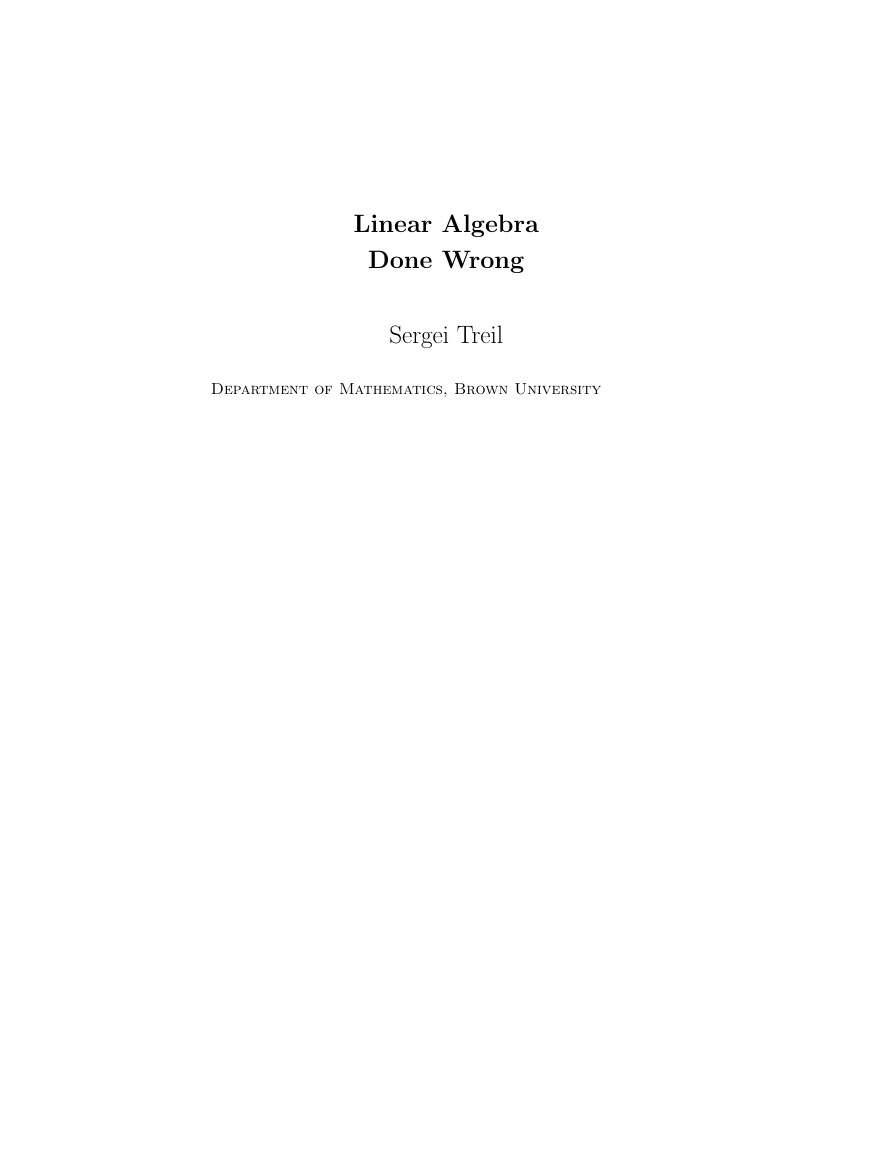

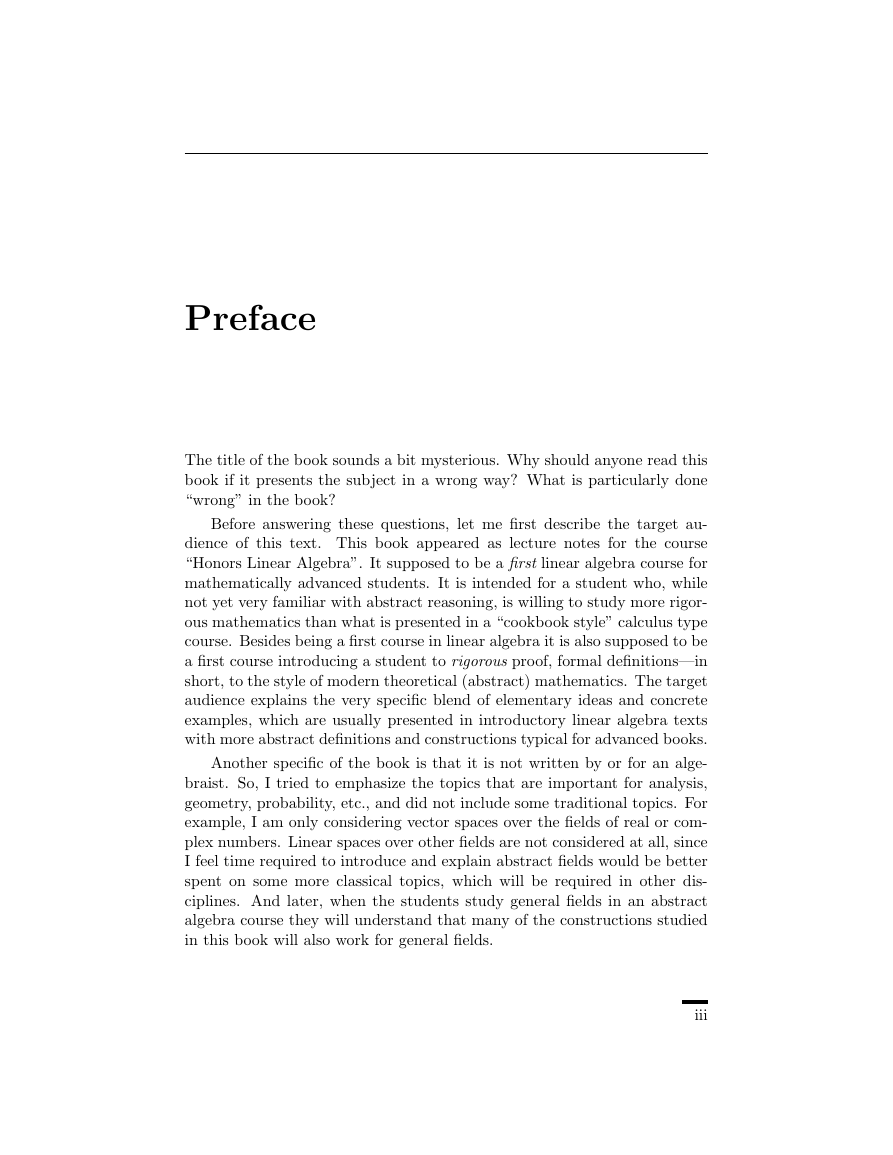
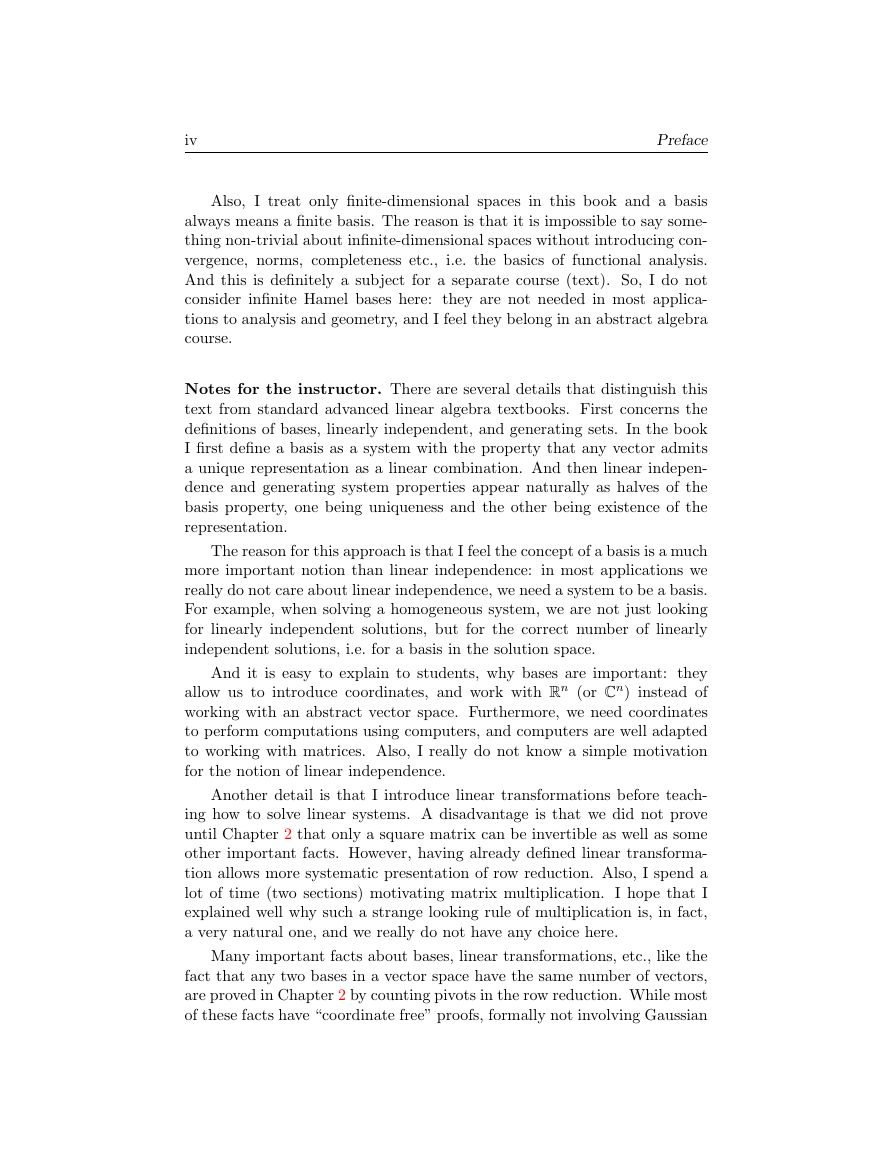
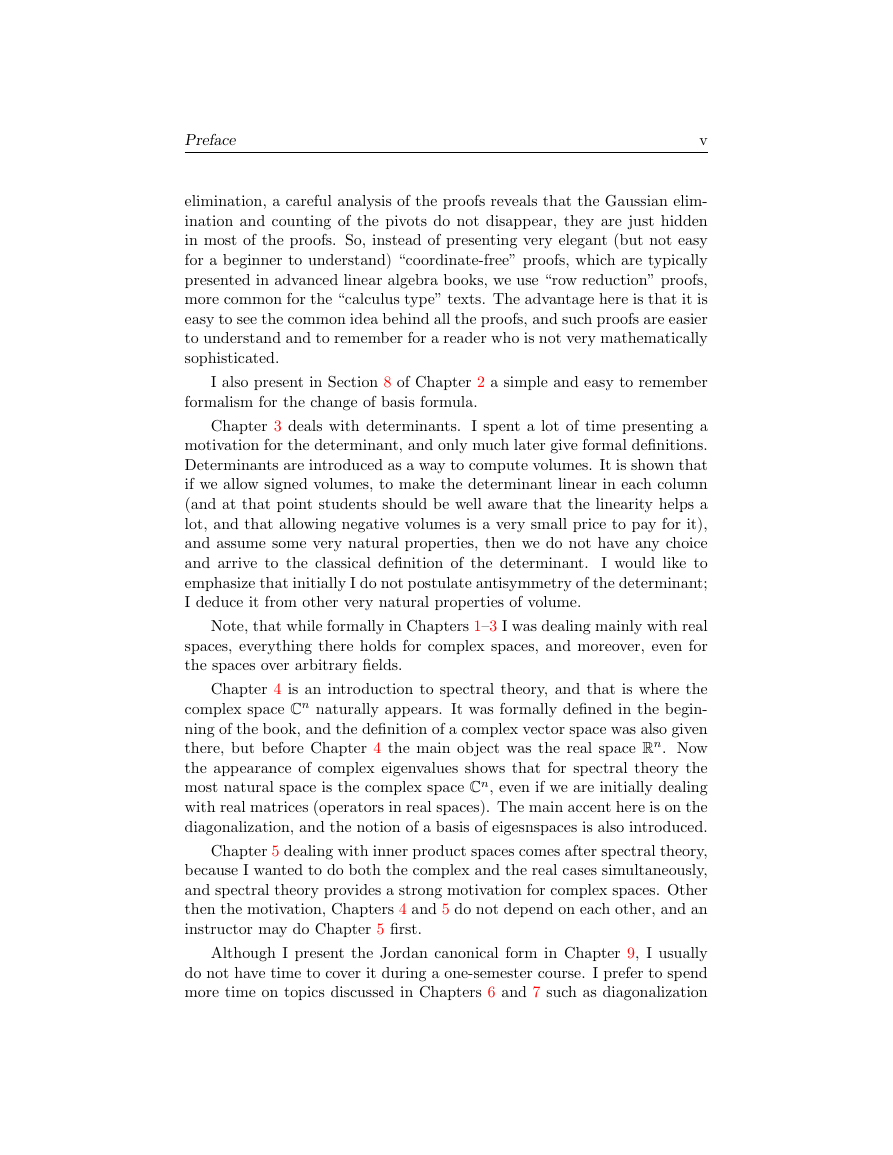
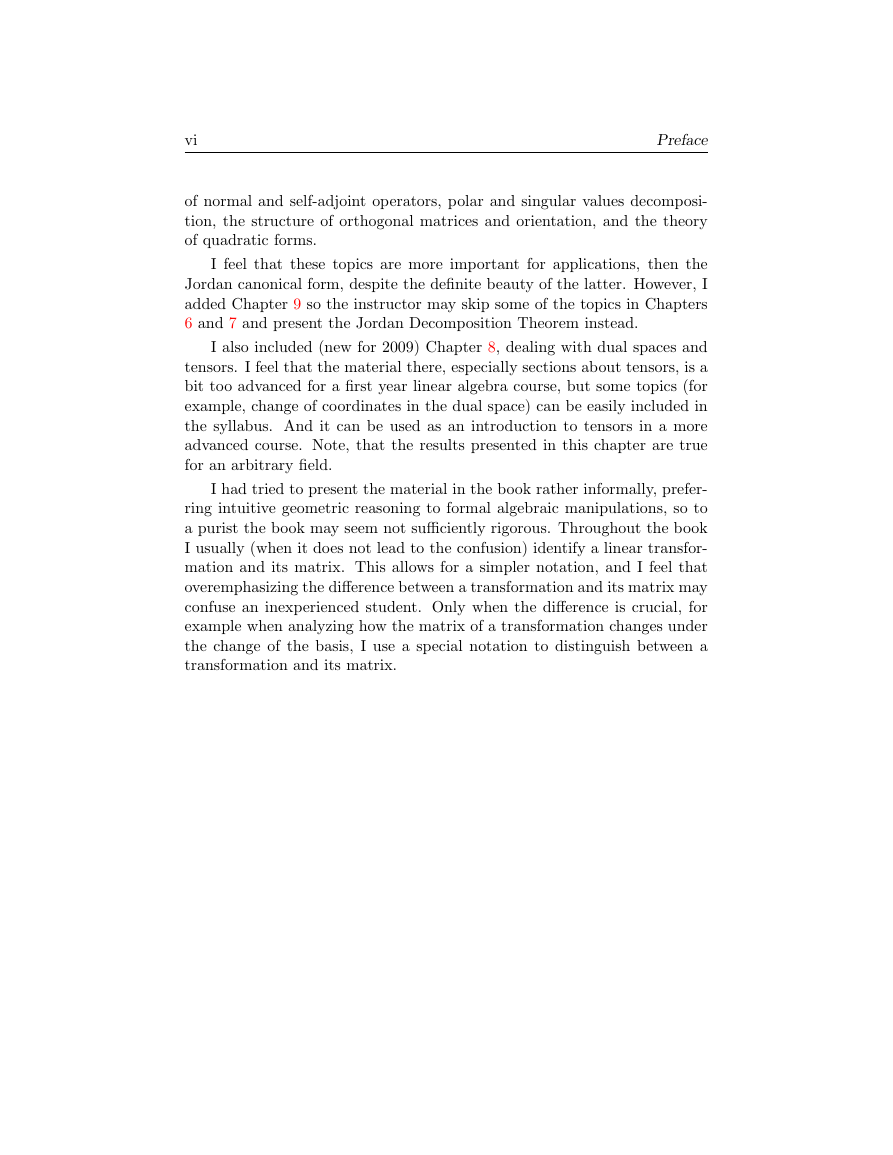
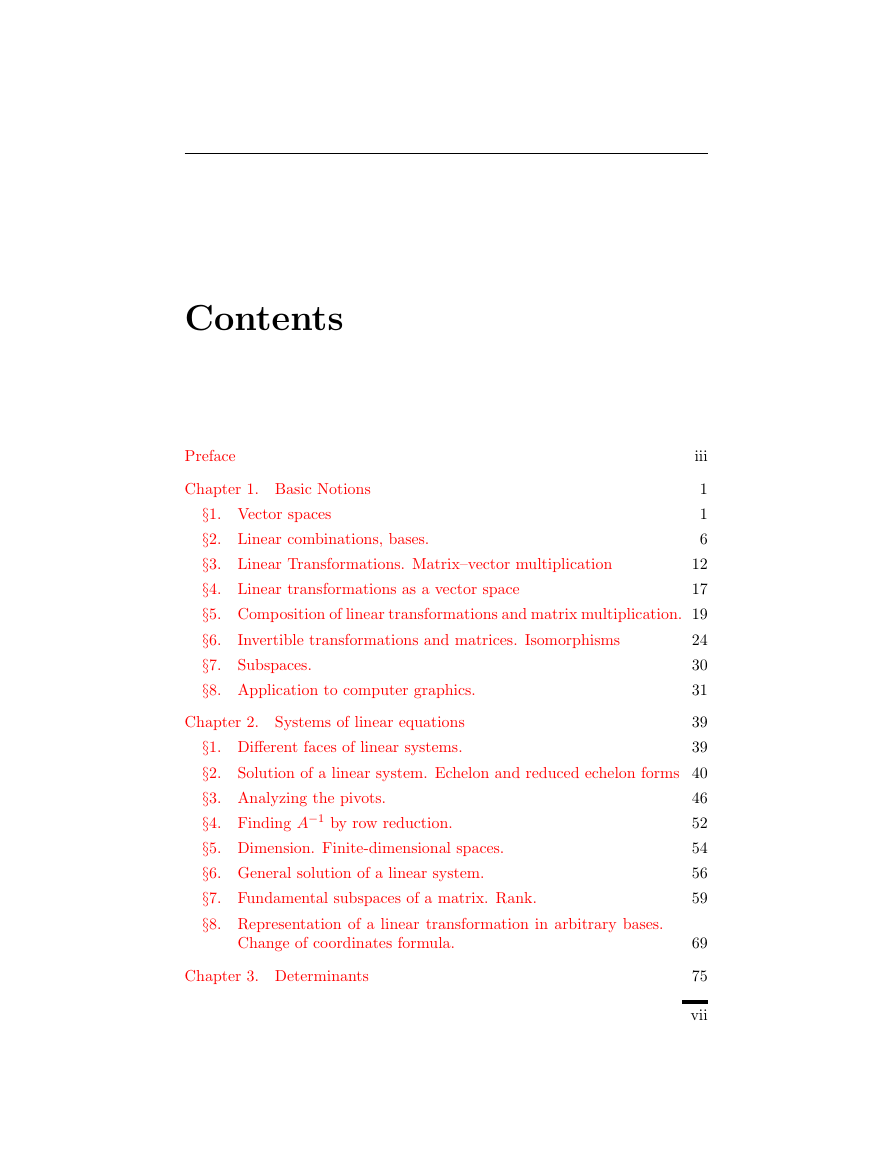









 2023年江西萍乡中考道德与法治真题及答案.doc
2023年江西萍乡中考道德与法治真题及答案.doc 2012年重庆南川中考生物真题及答案.doc
2012年重庆南川中考生物真题及答案.doc 2013年江西师范大学地理学综合及文艺理论基础考研真题.doc
2013年江西师范大学地理学综合及文艺理论基础考研真题.doc 2020年四川甘孜小升初语文真题及答案I卷.doc
2020年四川甘孜小升初语文真题及答案I卷.doc 2020年注册岩土工程师专业基础考试真题及答案.doc
2020年注册岩土工程师专业基础考试真题及答案.doc 2023-2024学年福建省厦门市九年级上学期数学月考试题及答案.doc
2023-2024学年福建省厦门市九年级上学期数学月考试题及答案.doc 2021-2022学年辽宁省沈阳市大东区九年级上学期语文期末试题及答案.doc
2021-2022学年辽宁省沈阳市大东区九年级上学期语文期末试题及答案.doc 2022-2023学年北京东城区初三第一学期物理期末试卷及答案.doc
2022-2023学年北京东城区初三第一学期物理期末试卷及答案.doc 2018上半年江西教师资格初中地理学科知识与教学能力真题及答案.doc
2018上半年江西教师资格初中地理学科知识与教学能力真题及答案.doc 2012年河北国家公务员申论考试真题及答案-省级.doc
2012年河北国家公务员申论考试真题及答案-省级.doc 2020-2021学年江苏省扬州市江都区邵樊片九年级上学期数学第一次质量检测试题及答案.doc
2020-2021学年江苏省扬州市江都区邵樊片九年级上学期数学第一次质量检测试题及答案.doc 2022下半年黑龙江教师资格证中学综合素质真题及答案.doc
2022下半年黑龙江教师资格证中学综合素质真题及答案.doc